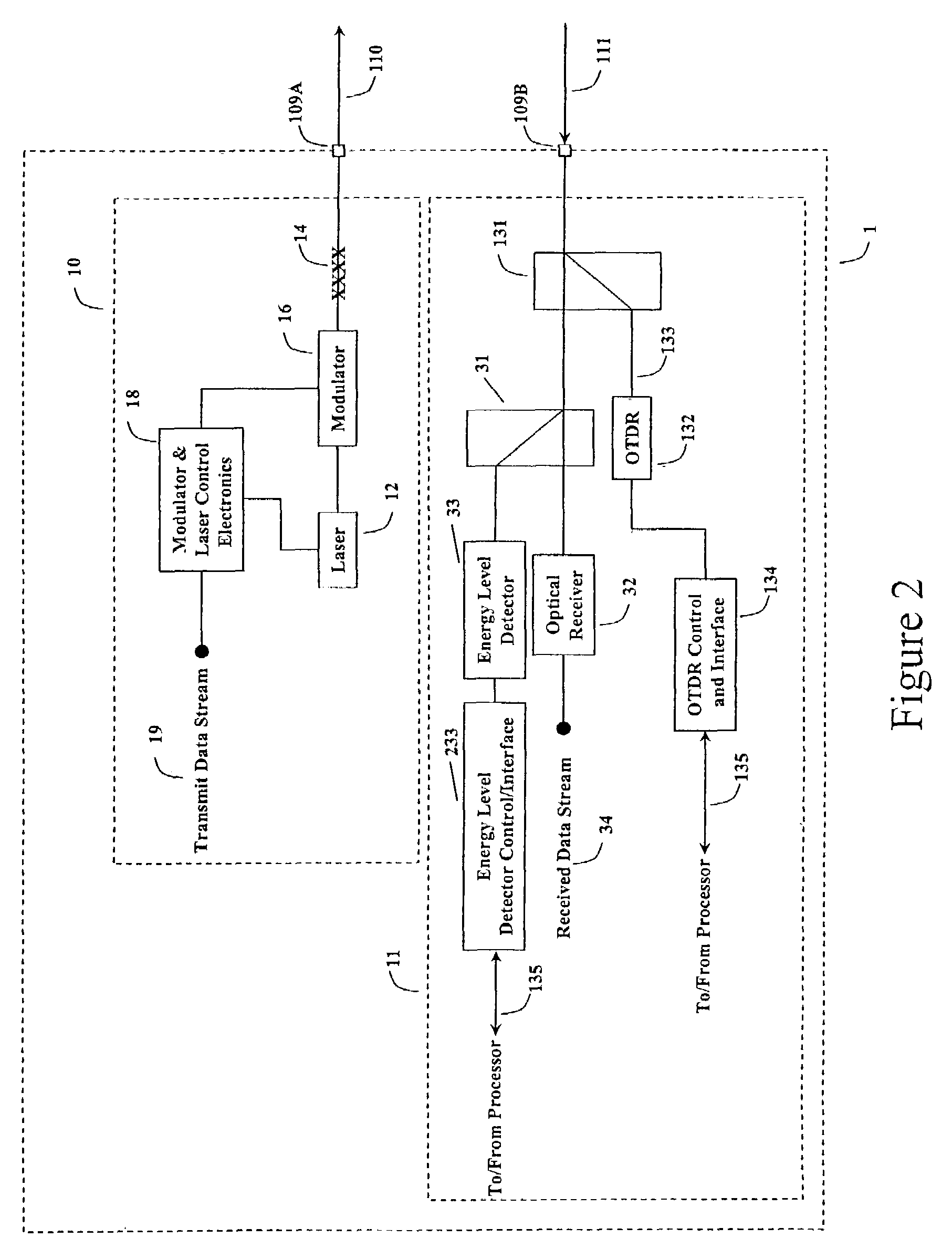Fiber optic telecommunications card with energy level monitoring
- Summary
- Abstract
- Description
- Claims
- Application Information
AI Technical Summary
Benefits of technology
Problems solved by technology
Method used
Image
Examples
Embodiment Construction
[0038]FIG. 1 shows an existing telecommunications box 2, for example a multiplexor, refitted with a card 1 of the present invention. Box 2 has an electronic data input 3 and output 4, which connect to a motherboard 5 of the box 2. Motherboard 5 includes a bus 6 for connecting existing amplitude-based cards to the motherboard 5, and connects the input 3 and output 4, through for example, data conversion circuitry, to the bus 6. The type of bus 6 is dependent upon the box manufacturer, and different types of boxes, motherboards and buses are well known in the art. Card 1 of the present invention includes electrical connections 8 to fit into bus 6.
[0039]Card 1 also includes a faceplate 9 and a backplane 7, which preferably is a printed circuit board. Faceplate 9 may be perpendicular to backplane 7 and be flush with a front side of box 2.
[0040]Faceplate 9 may have a fiber connector 109, such as a duplex SC connector, for connecting to an output fiber 110 and an input fiber 111. Alternat...
PUM
 Login to View More
Login to View More Abstract
Description
Claims
Application Information
 Login to View More
Login to View More - R&D
- Intellectual Property
- Life Sciences
- Materials
- Tech Scout
- Unparalleled Data Quality
- Higher Quality Content
- 60% Fewer Hallucinations
Browse by: Latest US Patents, China's latest patents, Technical Efficacy Thesaurus, Application Domain, Technology Topic, Popular Technical Reports.
© 2025 PatSnap. All rights reserved.Legal|Privacy policy|Modern Slavery Act Transparency Statement|Sitemap|About US| Contact US: help@patsnap.com



